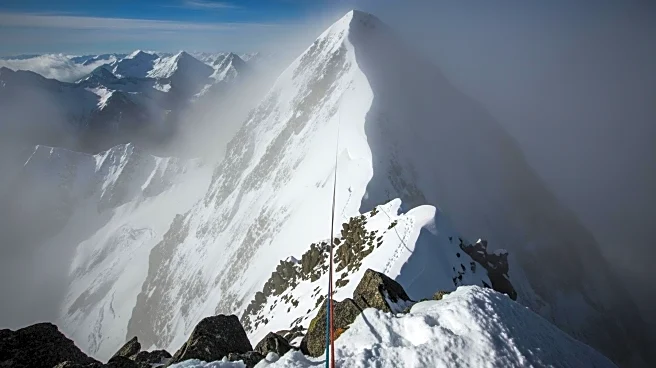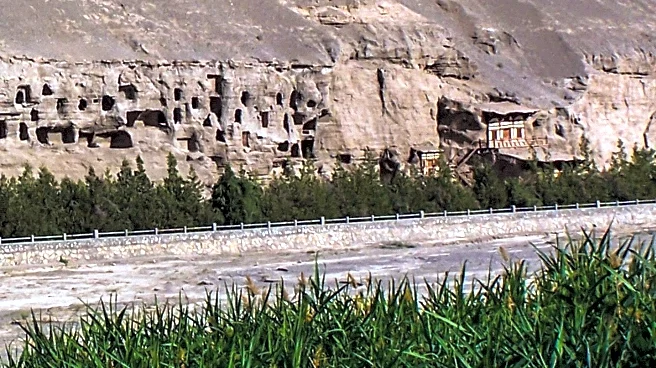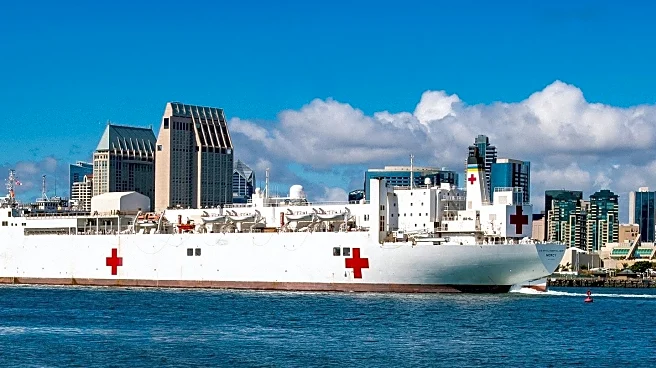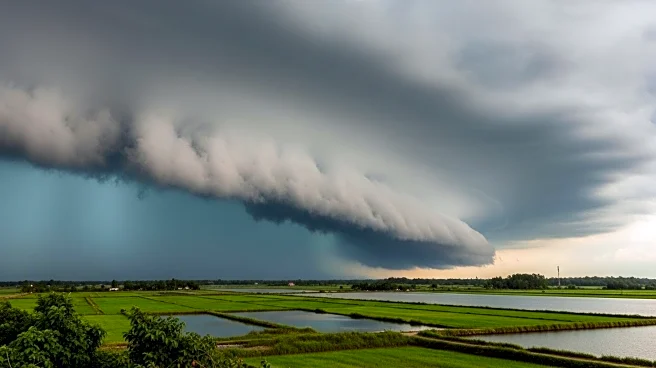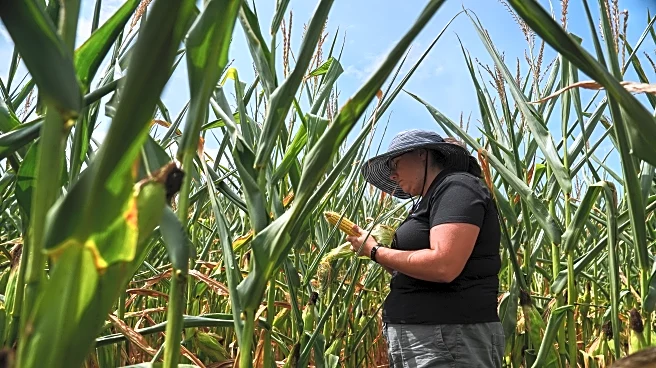What is the story about?
What's Happening?
Natalia Nagovitsyna, a Russian climber, is presumed dead after rescue attempts on Kyrgyzstan's highest peak, Victory Peak, failed. Nagovitsyna broke her leg and became stranded at an altitude of approximately 23,000 feet over two weeks ago. Despite several rescue attempts, including a thermal-imaging drone survey, no signs of life were detected. The harsh weather conditions, with temperatures dropping below -20C, and the challenging terrain have hindered rescue operations. An Italian climber, Luca Sinigaglia, died while attempting to reach her, and a rescue helicopter crashed during the efforts.
Why It's Important?
The incident highlights the extreme risks associated with high-altitude climbing, particularly in remote and harsh environments like the Tian Shan mountain range. The failure to rescue Nagovitsyna underscores the limitations of current rescue technologies and strategies at such altitudes. This tragedy may prompt discussions on improving safety measures and rescue protocols for climbers. The climbing community and related industries may face increased scrutiny regarding the safety of expeditions in perilous regions.
What's Next?
There may be calls for enhanced international cooperation in rescue operations for climbers in remote areas. The climbing community might advocate for better training and equipment to handle emergencies at high altitudes. Additionally, there could be a push for more stringent regulations on climbing permits and expedition planning to prevent similar incidents.
Beyond the Headlines
The incident raises ethical questions about the responsibilities of climbers and expedition organizers in ensuring safety and preparedness. It also highlights the cultural significance of mountaineering in regions like Central Asia, where such activities are deeply intertwined with local traditions and economies.
AI Generated Content
Do you find this article useful?
